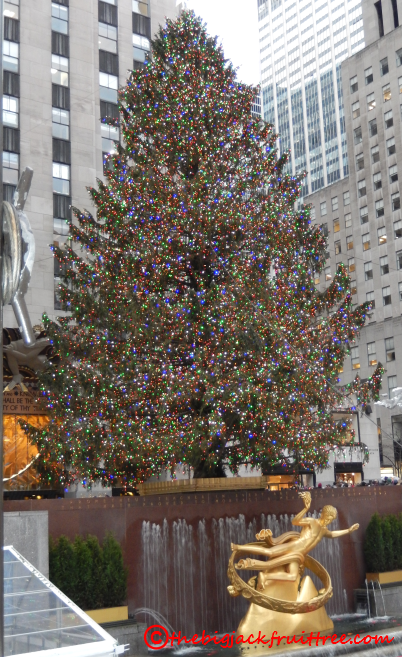NYBG Train Show
Author: Ria | Category: New York, Trains | Tags: Garden, New York, NYBG, Trains

I was so afraid I was going to miss the NYBG holiday train show this year. For starters, I was travelling for almost the whole of December. And, once I got back, the polar vortex also arrived, bringing ice and snow and sleet with it… Still, despite all odds, I made it in the nick of time… went and saw it on the last day of the show! 🙂
As my people already know, I am a great fan of trains. Small trains, big trains, unusual trains… all of them. Even the PATH trains. But at the NYBG show, I found the trains sort of meh… What really got me was the landscaping.
Combining historical and geographical interest, the show features 140 iconic New York buildings, many of them from dates past. The models are made to scale using all natural plant parts. It is almost like a miniature tour of the city!
This year’s show features 21 model trains and covers 6,000 square feet of area with 1,200 feet of track laid out. The trains in the show are G-gauge and represent American trains from the late 1800 steam engines to today’s high speed passenger trains.
A new introduction this year are trains made of plant parts, looking like they are straight out of some fairy tale. Hoping there will be many more of them next year!
Among the buildings recreated are the Brooklyn Bridge, the New York Public Library, the Guggenheim, City Hall, St. Patrick’s Cathedral, Radio City Music Hall, Rockefeller Center, the original Pennsylvania Station, Met Museum and many many more.
The train show debuted at the NYBG in 1992. The designer behind the wonderful miniature landscapes is Paul Busse, assisted by a team of 20+ artists and engineers of the Applied Imagination team. More examples of their fascinating work can be seen at www.appliedimagination.biz.
Plans for the buildings are made with the help of photographs and architectural drawings. Then a shell is made with foam board. Twigs, bark, moss, leaves, flowers, acorns, pine cones, seed pods… anything that comes from nature is used to mimic the architecture. The finished product is coated with a thin layer of resin to protect it from dust and moisture.
Each structure involves hundreds of hours of painstaking work, with every intricate detail recreated through the imaginative use of materials. The minute details, executed so meticulously, truly gives meaning to that oft repeated word ‘awesome’!
I was left with the definite impression that the original structure would have been way better if it was constructed with natural plant parts! 🙂
The holiday train show is held at the Enid A. Haupt Conservatory of the New York Botanical Garden.
~Ria
From the ‘Am I seeing things?’ department
Was Sunnyside, Washington Irving’s home in Tarrytown, featured twice in the show? I believe so (in fact, I have documentary evidence!) but realised that only when I was looking through the pictures taken! 🙂
15 Jan 2014











